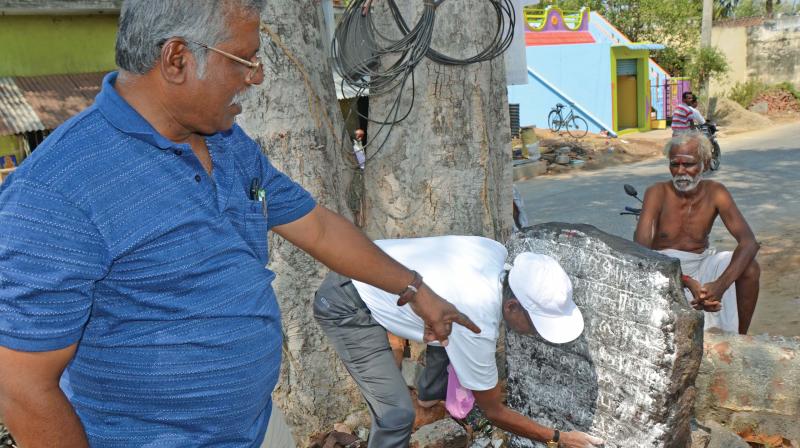Chola era sluice throws light on efficient irrigation
Stone structure believed to be almost 1,000 yrs old.

Chennai: A ‘stone sluice’ inscription belonging to the era of the Chola king Rajaraja I, discovered at Poraiyur near Tiruvannamalai by archaeologists, throws light on the effective management of irrigation systems, almost 1,000 years ago.
The inscription on a stone found at Kovil Poraiyur village near Thiruvannamalai records the setting up of a stone sluice in a lake by a local man to cater to the irrigation needs of a village near the temple town of Tiruvannamalai.
The man, identified in the inscription as ‘Korra Nangi of Gangeya Uttama Nallur, was the donor for establishing the sluice and it showed that people played an active role in water management. According to Prof S. Rajavelu, department of maritime history and marine archaeology, Tamil University, the inscription dated back to the Chola king Rajaraja I, (1009 CE).
The stone inscription is placed under a peepal tree and is being worshipped by the villagers as Lord Muniyappa Swamy or Muneeswarar, revered by devotees as a form of Lord Shiva, Prof Rajavelu who along with Prof R. Sekar and Sethu of Thiruvannamalai Historical Society, discovered the stone inscription, said.
Thiruvannamalai and its surrounding regions, known traditionally as “Tondaimandalam,” in Tamil, was dotted with thousands of irrigation lakes due to the efforts of the Pallava kings dating about 1,200 years ago. The Pallavas ensured that officials from the state and village bodies took care of maintaining the village water bodies. They also raised the lake bunds, and undertook desliting work every year.
There was a separate body for lake management called “Eri Variyam” and new outlets and inlets were set up by individuals in large numbers to regulate water use for agriculture, he said.

